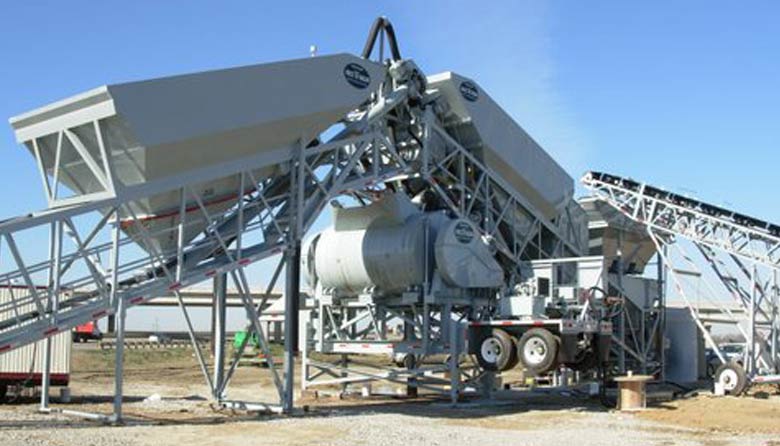Physical Address
304 North Cardinal St.
Dorchester Center, MA 02124
Physical Address
304 North Cardinal St.
Dorchester Center, MA 02124

The process of estimating and combining the necessary concrete materials with weight or volume by the mix design, then adding them to the mix to produce concrete of a consistent quality is known as batching.
Concrete is often batch-batched using volume. When batching, accuracy is crucial. Volume batching is not as effective as weight batching. To get great quality of concrete, the concrete ingredient must be precisely batched or metered before generating a concrete mixture.
The three techniques for batching concrete are as follows:
Volumetric batching at random
Batching volumetrically
Concrete batching by weight
lack of control over the applied containers’ size and shape, leading to significant disruptions and deviations in numbers. This approach is extremely simplistic and unscientific, and it shouldn’t be suggested for any kind of project, no matter how tiny.
Concrete volume batching is carried out using a measurement box known locally as a “farma or gauge.” Cement and aggregates (Karachi + sand) for concrete are estimated using farms or gauge boxes; care must be given to prevent the gauge box’s form from being overfilled.
Concrete can be weight-baked utilising a weighting system or a batch-wet batch method. Automated batching plants are used on big projects to help with quality and consistency optimization.
Since water is a crucial component, batching should use the most water possible. A tiny amount of water will cause the concrete to operate irregularly, while an excessive amount will weaken the concrete. Litres of water must be carefully calculated.
The particulars of the project, like the kind and intricacy of the structure, the necessary concrete mix design, and the targeted quality standards, are important considerations when choosing the batching technique. Concrete consistency, strength, and other criteria may vary depending on the project.
The selection of a batching method can be influenced by the quantity of concrete required and the frequency of concrete pouring. For major building projects with significant concrete demand, a centralised batching plant with the capacity to produce enormous quantities of concrete might be selected. If you require concrete on occasion or for minor projects, you could be better off using a mobile or on-site batching solution.
The size, design, and accessibility of the construction site can all have an impact on the batching method chosen. It may not be feasible or efficient to set up a stationary batching plant in some locations due to space constraints, challenging topography, or logistical issues. Alternative techniques, like on-site mixing or mobile batching facilities, might be desirable in some situations.
It’s crucial to take into account the degree of control and consistency needed in the manufacturing of concrete. For projects with stringent quality control requirements, batching techniques that provide greater control over mix quantities, water-cement ratios, and additives could be chosen. Accuracy and consistency in the batching process can be preserved with the aid of automated batching systems.
The batching method chosen may be influenced by the amount of time available for the manufacturing and transport of concrete. Certain projects could call for quick manufacture and delivery of concrete, which can be accomplished with techniques like volumetric batching or ready-mix concrete from a private vendor. Conversely, projects with more leeway in scheduling could go for on-site batching techniques, which offer more control over the concrete production process.
One important consideration is the financial impact of various batching techniques. This covers factors including labour costs, equipment and setup expenses, transportation costs, and total operating costs. Choosing a batching technique that strikes a balance between cost-effectiveness and the required levels of productivity and quality is crucial.
A stationary concrete batching machine is ideal for large-scale construction projects with a steady demand for concrete. It is situated at a fixed location. Typically, it consists of a cement silo, a mixer, control equipment, and multiple storage bins for different aggregates. High production capacity and exact batching process control are provided by stationary units.
Transporting a Concrete Batching Equipment to several job locations is made simple with a mobile batching plant. Because of its convenience and adaptability, it can be used in remote areas or for projects with sporadic concrete requirements. Compact and frequently wheeled, mobile plants are simple to move around. Typically, they consist of bins for storage, a cement silo, a mixer, and control apparatus.
These plants are made to be as space-efficient as possible without sacrificing output. They work well for modest to medium-sized projects where there is a shortage of available space. Storage bins, a cement silo, a mixer, and control equipment are frequently combined into one unit or a compact arrangement in compact plants.
All of the components, such as cement, additives, and aggregates, are pre weighed and kept apart in a dry mix factory. When needed, the pre-weighed components are combined on-site to make concrete. When producing concrete on demand for smaller projects, dry mix facilities are frequently utilised.
Prior to being delivered to the construction site, all of the materials are mixed and combined in a wet mix plant. The appropriate consistency of concrete is achieved by completely mixing the aggregates, cement, water, and additives. Concrete produced by wet mix facilities is renowned for being of excellent quality and consistency.
Continuous Concrete Batching Equipment: These plants are made to produce concrete continuously and without interruption.
A Concrete Batching Equipment is a device that uses a revolving drum to mix concrete. The cement and water mixture is precisely produced by the machine. High-speed rotation of the drum enables the cement to be combined with water and air at varying rates, resulting in a homogenous slurry.